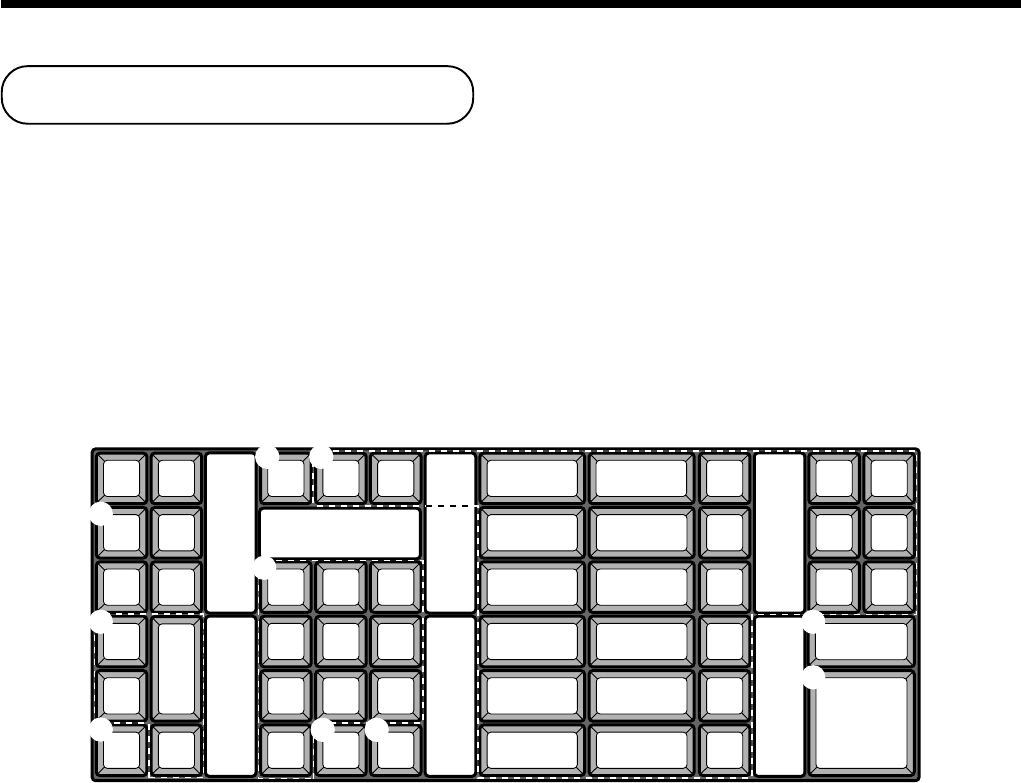
78
Advanced Operations and Setups
1 Shift key
Pressing this key shifts the character through the upper-
case letter, lower case letter, numerics and returns to the
uppercase letter in sequence.
2 Double size letter key
Specifies that the next character you input to a double
size character.
You must press this key before each double size charac-
ter.
3 Space key
Sets a space by depression.
4 Clear key
Clears all input characters in the programming.
5 Alphabet keys
Used input to characters.
6 Numeric keys
Used to enter program codes, memory number and
character codes.
Entering characters
In this section, the method to enter descriptors or messages (characters) to the cash register during
programming is described.
Characters are specified by character keyboard or by codes. In the first half of this section, the usage of
character keyboard is described. In the latter half, inputting method by character code is described.
Using character keyboard
Example:
Input “
A
p ple J u i ce ”,
enter “DBL”“A” “SHIFT”“p” “p” “l” “e” “SPACE”“SHIFT” “SHIFT”“J” “SHIFT”“u” “i” “c” “e” - .
JOURNAL
FEED
C
RECEIPT
FEED
SHIFT
DOUBLE
SIZE
#-2
#-1
789
456
123
000•
CDEFG
cdefg
HIJKL
hi jkl
M7 N8 O9 P Q
mn opq
R4 S5 T6
rst
U1 V2 W3
uvw
X0 Y Z
xyz
AB
ab
4 5
7 8
1
3 9
0
6
2
7 Character fixed key
Enter when the alphabetic entry for a descriptor, name or
message has been completed.
8 Backspace/Character code fixed key
Registers one character with code (2 or 3 digit).
Clears the last input character, much like a back space
key. (Does not clear the double size letter key entry.)
9 Program end key
Terminates the character programming.
0 Character enter key
Registers the programmed characters.


















